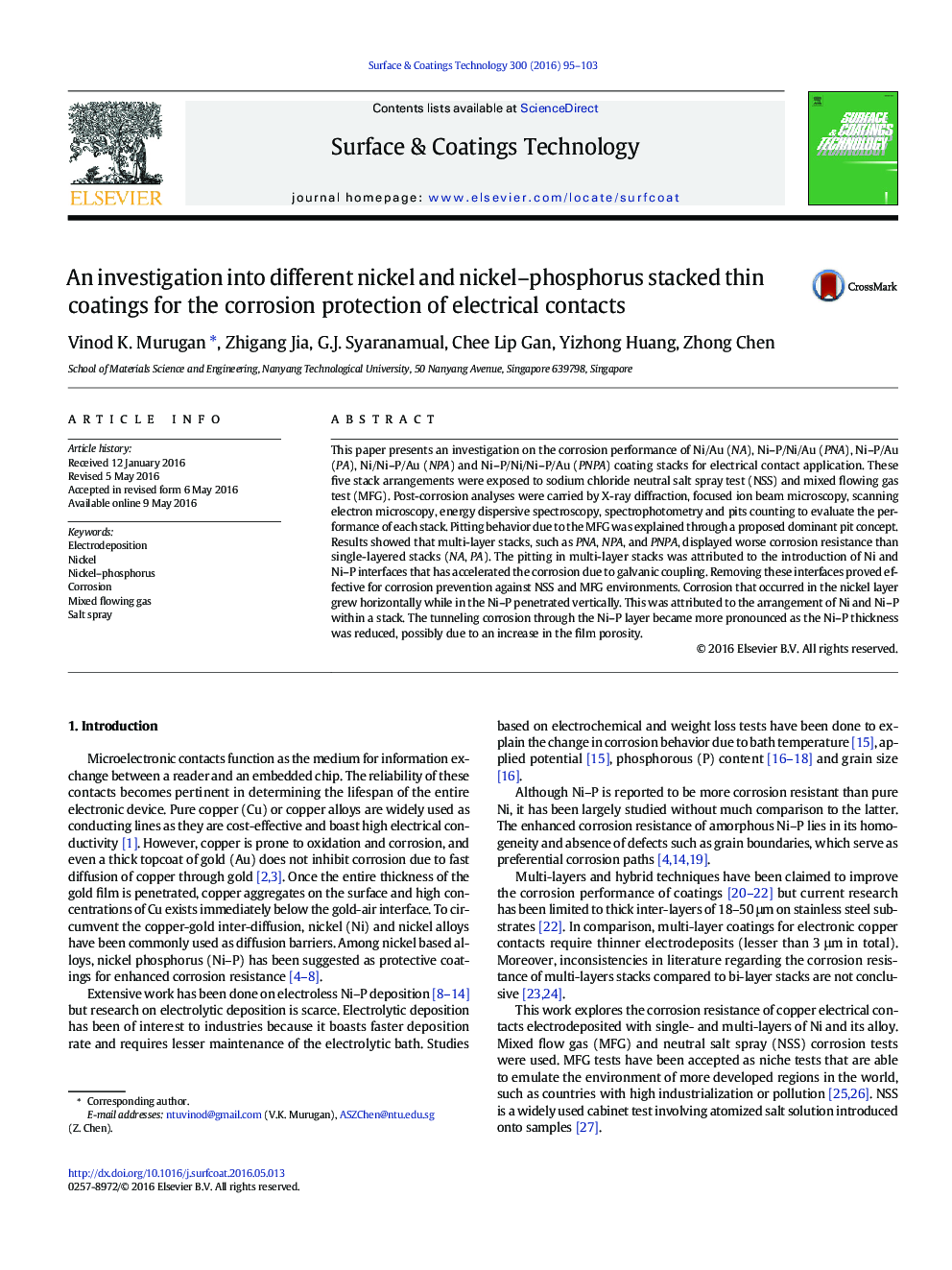| کد مقاله | کد نشریه | سال انتشار | مقاله انگلیسی | نسخه تمام متن |
|---|---|---|---|---|
| 1656335 | 1517579 | 2016 | 9 صفحه PDF | دانلود رایگان |
• Single and multi-layers of Ni and Ni–P were electrodeposited onto a Cu substrate.
• Corrosion tests include neutral salt spray (NSS) and mixed flowing gas test (MFG).
• Introduction of Ni and Ni–P interface accelerates pitting corrosion.
• Appearance of pits formed in Ni and Ni–P layers are different in nature.
• Single-layer barrier layers are proposed for corrosion protection in NSS and MFG.
This paper presents an investigation on the corrosion performance of Ni/Au (NA), Ni–P/Ni/Au (PNA), Ni–P/Au (PA), Ni/Ni–P/Au (NPA) and Ni–P/Ni/Ni–P/Au (PNPA) coating stacks for electrical contact application. These five stack arrangements were exposed to sodium chloride neutral salt spray test (NSS) and mixed flowing gas test (MFG). Post-corrosion analyses were carried by X-ray diffraction, focused ion beam microscopy, scanning electron microscopy, energy dispersive spectroscopy, spectrophotometry and pits counting to evaluate the performance of each stack. Pitting behavior due to the MFG was explained through a proposed dominant pit concept. Results showed that multi-layer stacks, such as PNA, NPA, and PNPA, displayed worse corrosion resistance than single-layered stacks (NA, PA). The pitting in multi-layer stacks was attributed to the introduction of Ni and Ni–P interfaces that has accelerated the corrosion due to galvanic coupling. Removing these interfaces proved effective for corrosion prevention against NSS and MFG environments. Corrosion that occurred in the nickel layer grew horizontally while in the Ni–P penetrated vertically. This was attributed to the arrangement of Ni and Ni–P within a stack. The tunneling corrosion through the Ni–P layer became more pronounced as the Ni–P thickness was reduced, possibly due to an increase in the film porosity.
Figure optionsDownload high-quality image (210 K)Download as PowerPoint slide
Journal: Surface and Coatings Technology - Volume 300, 25 August 2016, Pages 95–103
